Do you have a question about the MELAG MELAtronic 15 EN+ and is the answer not in the manual?
Describes the manual's scope regarding device details.
Explains the manual's function and importance.
Highlights key safety information sections.
Explains symbols used within the manual text.
Details formatting for glossary and references.
Explains symbols found directly on the autoclave.
Instructions for disposing of the device.
Guidance on disposing of related items.
How to handle and dispose of packaging materials.
Defines the intended purpose and conditions of operation.
Covers electrical safety related to the power cord.
Safety measures during initial setup.
Precautions for processing materials.
Safety considerations when stopping a cycle.
Safe handling of items post-sterilization.
Safety guidelines during maintenance activities.
Instructions for transporting the device.
Safety measures related to device errors.
Defines intended use and operational conditions.
Highlights advantages and key functionalities.
Details available programs and their suitability.
Lists all components included with the autoclave.
Labels external and internal parts of the autoclave.
Specifies the internal chamber volume and dimensions.
Describes the system for holding trays and loads.
Explains the display and buttons for operation.
Details the source and requirements for feed water.
Outlines necessary requirements before installation.
Instructions for safely unpacking the device.
Specifies environmental and placement criteria.
Details on connecting power and optional containers.
Steps for turning on the autoclave for the first time.
Procedure for adding water to the storage tank.
Guidance on cleaning and handling items for sterilization.
Procedures and precautions for textile loads.
Procedures and precautions for instrument loads.
Guidelines for optimal load placement.
Information on suitable packaging materials.
Specifics for using closed sterilization containers.
Best practices for arranging stacked containers.
Guidance for using flexible packaging materials.
How to sterilize combined loads.
Details different load configurations and limits.
Checklist before starting and how to close the door.
Guide to choosing the correct program type.
How to configure and use the pre-heating feature.
How to extend the drying phase.
Steps to begin and track a cycle.
Description of the different stages of a cycle.
Steps to safely stop a running program.
Specifics on aborting during the drying stage.
How to confirm successful completion.
Details on the drying process and tips.
Notification of program end and batch info.
Procedures and safety for unloading.
Guidelines for storing sterilized items.
Explains why logging is necessary.
Lists devices for transferring logs.
Procedure to configure the clock.
Connecting and configuring a log printer.
Verifying printer functionality.
Connecting and using the CF card printer.
Connecting to a network for log storage.
Connecting a PC for log data.
Setting up auto-printing of logs.
Printing logs after the program finishes.
How to print specific logged cycles.
Outputting all stored log data.
Procedure to clear the log memory.
Checking the amount of stored logs.
Understanding the content of log files.
Routine checks for cleanliness and damage.
Cleaning the exterior and greasing moving parts.
Inspecting the water tank for soiling.
Changing water and cleaning filters/sensors.
Procedure for cleaning specific filters within the chamber.
Maintenance for specific filters.
Causes and prevention of stains.
Guidelines for using correct water quality.
Steps for changing a blown fuse.
Importance of regular service and intervals.
Advice on cycle frequency and breaks.
Procedures for extended periods of inactivity.
Actions required after a break.
Instructions for long-term shutdown.
Guidelines for moving the device safely.
Steps to restart the autoclave after moving.
How the device performs self-checks.
Methods for manual verification of functions.
Performing the steam penetration test.
How to check water conductivity.
Differentiating message types.
How errors are presented and what they mean.
Actions to take before contacting support.
Details specific warnings and their remedies.
Covers alerts for maintenance needs and battery status.
Lists common error codes and remedies.
Continues listing error codes and their fixes.
Addresses issues with the display and door lock.
Addresses steam leaks and high water use.
Common causes and solutions for bad drying.
Describes the manual's scope regarding device details.
Explains the manual's function and importance.
Highlights key safety information sections.
Explains symbols used within the manual text.
Details formatting for glossary and references.
Explains symbols found directly on the autoclave.
Instructions for disposing of the device.
Guidance on disposing of related items.
How to handle and dispose of packaging materials.
Defines the intended purpose and conditions of operation.
Covers electrical safety related to the power cord.
Safety measures during initial setup.
Precautions for processing materials.
Safety considerations when stopping a cycle.
Safe handling of items post-sterilization.
Safety guidelines during maintenance activities.
Instructions for transporting the device.
Safety measures related to device errors.
Defines intended use and operational conditions.
Highlights advantages and key functionalities.
Details available programs and their suitability.
Lists all components included with the autoclave.
Labels external and internal parts of the autoclave.
Specifies the internal chamber volume and dimensions.
Describes the system for holding trays and loads.
Explains the display and buttons for operation.
Details the source and requirements for feed water.
Outlines necessary requirements before installation.
Instructions for safely unpacking the device.
Specifies environmental and placement criteria.
Details on connecting power and optional containers.
Steps for turning on the autoclave for the first time.
Procedure for adding water to the storage tank.
Guidance on cleaning and handling items for sterilization.
Procedures and precautions for textile loads.
Procedures and precautions for instrument loads.
Guidelines for optimal load placement.
Information on suitable packaging materials.
Specifics for using closed sterilization containers.
Best practices for arranging stacked containers.
Guidance for using flexible packaging materials.
How to sterilize combined loads.
Details different load configurations and limits.
Checklist before starting and how to close the door.
Guide to choosing the correct program type.
How to configure and use the pre-heating feature.
How to extend the drying phase.
Steps to begin and track a cycle.
Description of the different stages of a cycle.
Steps to safely stop a running program.
Specifics on aborting during the drying stage.
How to confirm successful completion.
Details on the drying process and tips.
Notification of program end and batch info.
Procedures and safety for unloading.
Guidelines for storing sterilized items.
Explains why logging is necessary.
Lists devices for transferring logs.
Procedure to configure the clock.
Connecting and configuring a log printer.
Verifying printer functionality.
Connecting and using the CF card printer.
Connecting to a network for log storage.
Connecting a PC for log data.
Setting up auto-printing of logs.
Printing logs after the program finishes.
How to print specific logged cycles.
Outputting all stored log data.
Procedure to clear the log memory.
Checking the amount of stored logs.
Understanding the content of log files.
Routine checks for cleanliness and damage.
Cleaning the exterior and greasing moving parts.
Inspecting the water tank for soiling.
Changing water and cleaning filters/sensors.
Procedure for cleaning specific filters within the chamber.
Maintenance for specific filters.
Causes and prevention of stains.
Guidelines for using correct water quality.
Steps for changing a blown fuse.
Importance of regular service and intervals.
Advice on cycle frequency and breaks.
Procedures for extended periods of inactivity.
Actions required after a break.
Instructions for long-term shutdown.
Guidelines for moving the device safely.
Steps to restart the autoclave after moving.
How the device performs self-checks.
Methods for manual verification of functions.
Performing the steam penetration test.
How to check water conductivity.
Differentiating message types.
How errors are presented and what they mean.
Actions to take before contacting support.
Details specific warnings and their remedies.
Covers alerts for maintenance needs and battery status.
Lists common error codes and remedies.
Continues listing error codes and their fixes.
Addresses issues with the display and door lock.
Addresses steam leaks and high water use.
Common causes and solutions for bad drying.
| Chamber Volume | 15 Liters |
|---|---|
| Operating Pressure | 2.1 bar |
| Type | Steam sterilizer |
| Power Supply | 230 V, 50/60 Hz |
| Sterilization Temperature | 121°C - 134°C |
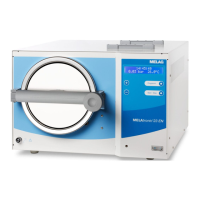
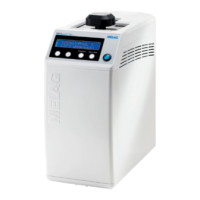
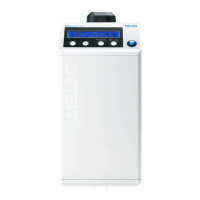
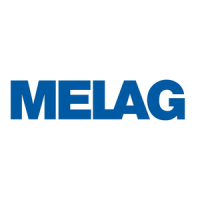
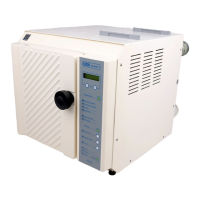
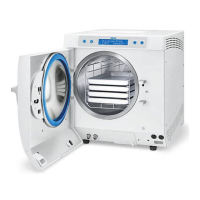
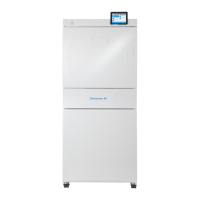
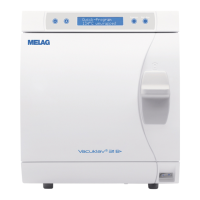
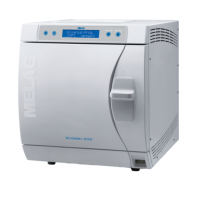
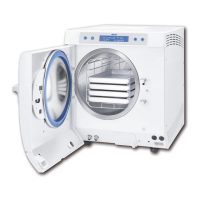
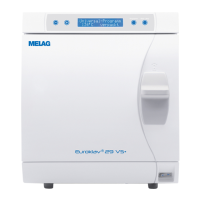
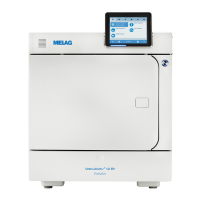
